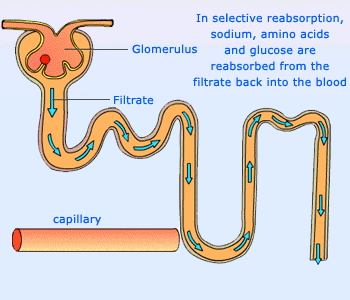 Kidney Reabsorption
Tubular reabsorption is the process by which solutes and water are removed from the tubular fluid and transported into the blood.
Kidney Reabsorption
Tubular reabsorption is the process by which solutes and water are removed from the tubular fluid and transported into the blood. Tubular reabsorption is the process by which solutes and water are removed from the tubular fluid and transported into the blood. It is called reabsorption (and not absorption) because these substances have already been absorbed once (particularly in the intestines).
Reabsorption is a two–step process beginning with the active or passive extraction of substances from the tubule fluid into the renal interstitium (the connective tissue that surrounds the nephrons), and then the transport of these substances from the interstitium into the bloodstream. These transport processes are driven by Starling forces, diffusion and active transport.
Renal tubule is responsible for reabsorption and secretion. The descending limb of the loop of Henle is permeable to water but not to the salt; water moves by osmosis into hyper – osmotic interstitial fluid. Salt diffuses out of the concentrated filtrate as it moves through the salt – permeable ascending limb of the loop of Henle. The distal tubule plays a key role in regulating the K+ and NaCl concentration of the body fluids. The collecting duct carries the filtrate through the medulla to the renal pelvis and reabsorbs NaCl.